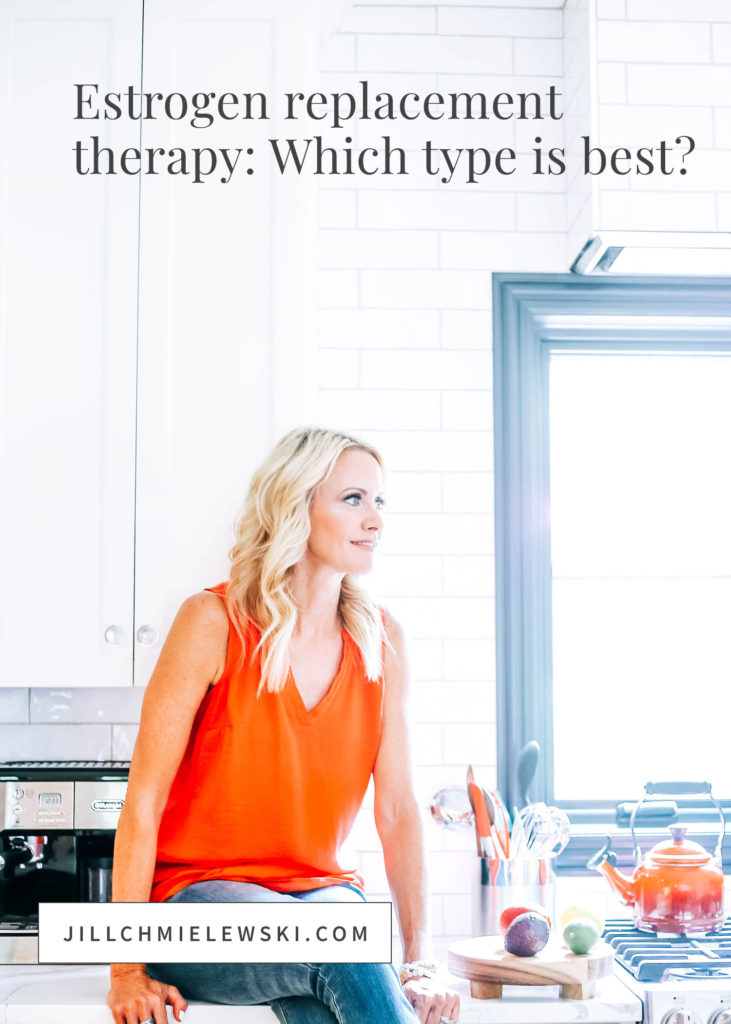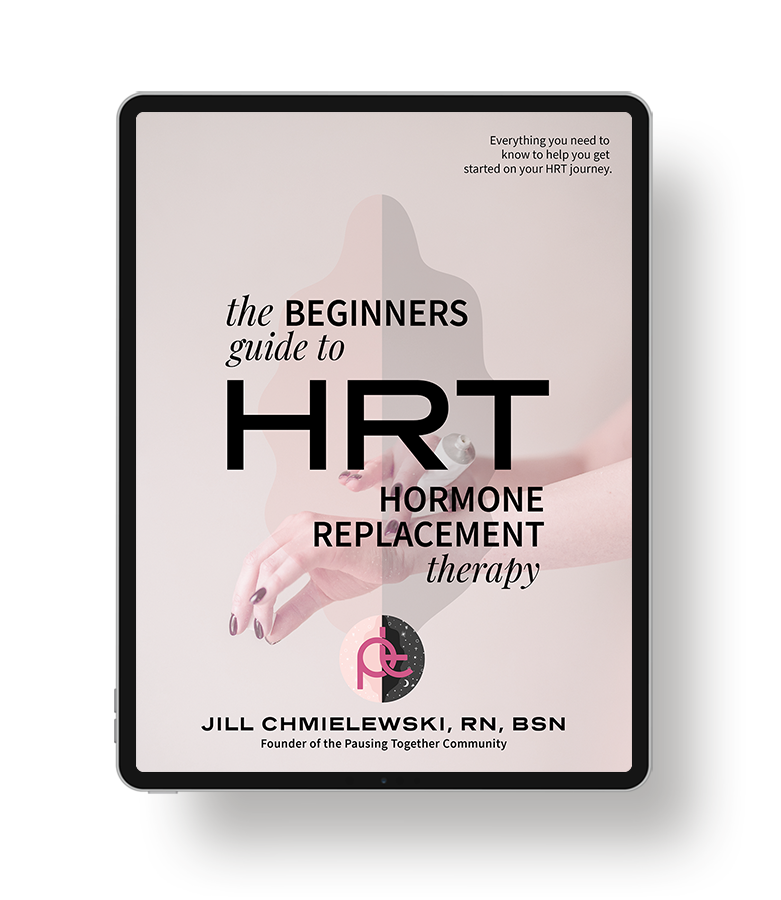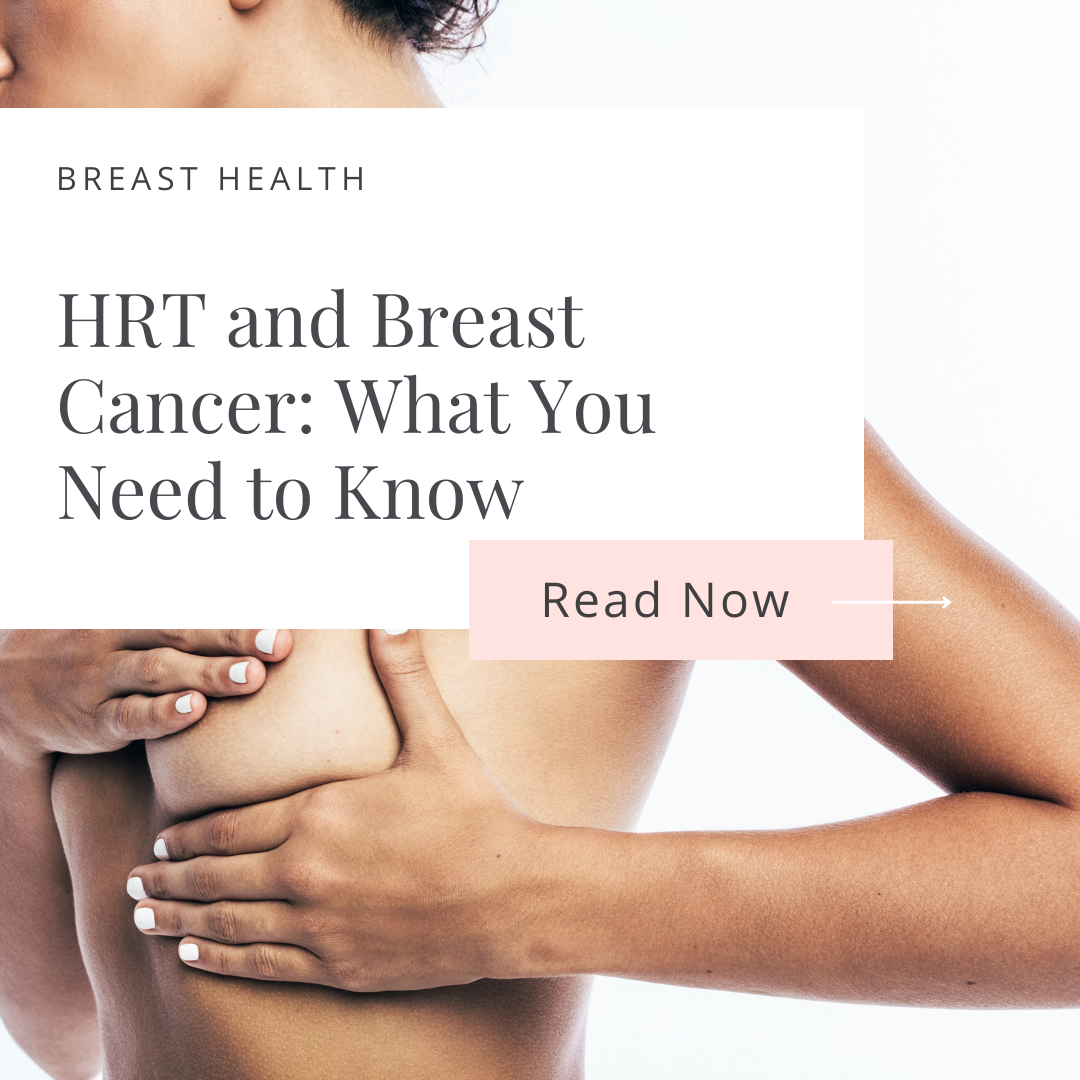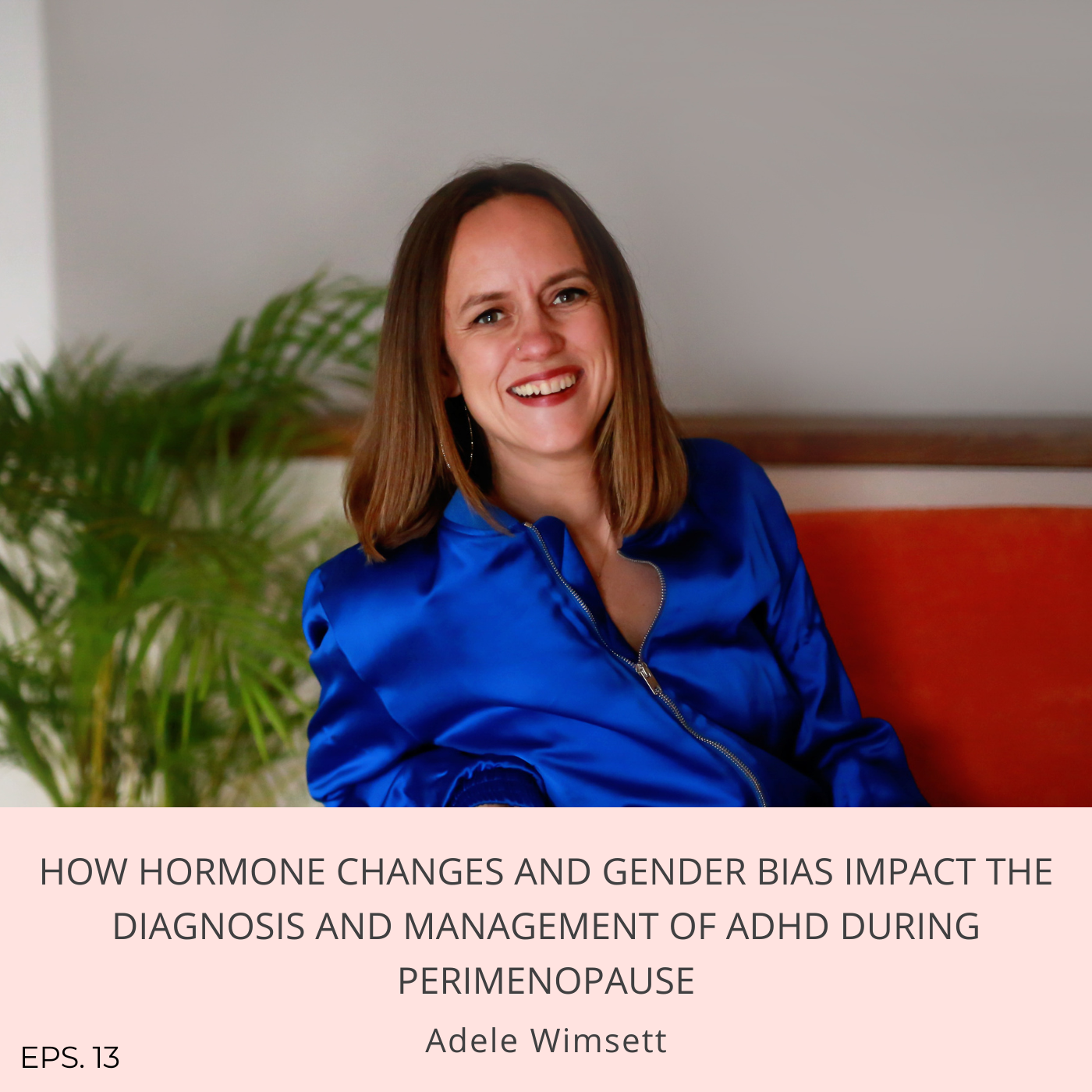Confused about which type of estrogen replacement therapy is best? You are not alone. It’s a hot topic in the world of menopause medicine.
If you were to survey menopause practitioners from around the globe and ask them their preferred type of estrogen replacement therapy, you’d get many different answers. That’s because practitioners who prescribe hormone replacement therapy (HRT) come from different training backgrounds and have vastly different experiences treating patients with HRT.
There’s also the issue of bias and inaccuracy in medical research. What do I mean by that?
Interpretation of the research on HRT varies from practitioner to practitioner simply because the research is, well….confusing.

There are so many variables in HRT type, dosing, and duration. Many HRT studies bucket all HRT together and then draw conclusions about HRT without providing the details that are critically important to understanding the study results.
- Was oral estrogen or topical estrogen used?
- Was the estrogen replacement estradiol alone or Bi-Est?
- Was the progesterone oral progesterone or an oral progestin? (They are vastly different!)
- Was the oral formulation a sustained-release or standard HRT formulation?
- Was the HRT bioidentical or synthetic?
- Was the HRT cycled or taken consistently?
- Was the dosing customized to a woman’s unique needs, or did everyone in the study receive the same dose?
The details make a difference.
The other major issue is that most clinical trials are conducted and funded by drug companies, so the results of those studies are often biased in a way that will benefit the drug company. And if a drug company biases the medical research, then your clinician who relies on the medical research is biased in their prescribing decisions.
There are a lot of other variables at play that we don’t have time to go into in this particular article, but I wanted to give you some background info so that you understand some of the reasons why there is so much confusion surrounding HRT (and many other medical treatments, for that matter).
It’s essential to do your research and only work with knowledgeable and experienced menopause clinicians who are adept at identifying well-designed research studies surrounding hormone therapy and accurately interpreting study findings.
They also need to be critical thinkers who draw on the observational research on hormones that’s been around for eons: Every woman who has ever walked the planet has hormones flowing through her body.
Hormones are vital chemical messengers that support every function in a woman’s body. Women feel best when hormone levels are optimal and balanced. Working with a practitioner who understands the physiology of the body and the role that hormones play in the body will be invaluable in helping you decide which type of estrogen replacement therapy is best for you.
There is more than one way to treat a woman in perimenopause and menopause.
Like most treatments in medicine, there’s more than one right way of supporting a patient, and in menopause medicine, the same holds. Individuality is critical, and decisions about the “right type” of estrogen replacement should be made individually.
The most common questions I get from women regarding estrogen replacement therapy are:
- Which form of estrogen is safest: oral or topical?
- Should I choose bioidentical or non-bioidentical (synthetic) estrogen?
- Which type of estrogen replacement is best ~ estradiol or Bi-Est?
- Do I need progesterone replacement when taking estrogen replacement?
I’ve gone through a lot of training in menopause medicine and HRT, and I’ve sifted through a lot of the HRT research, so I’d like to share what I know about these important topics with you so that YOU can make the best decision for YOU.
Which form of estrogen is safest: oral or topical?
We know that taking any form of estrogen orally (in pill form) increases clotting factors in the blood. If you’ve asked your practitioner to prescribe estrogen replacement and they expressed concern about the cardiovascular/clotting risks associated with estrogen, it was likely related to estrogen in its oral form. (Hopefully, they raised this same concern when prescribing your birth control pill.) Transdermal estrogen (estrogen applied to the skin) does not increase clotting factors in the blood.
Oral estrogen is problematic for the liver, raises sex-hormone binding globulin (SHBG) levels in the blood, and requires high doses due to the first pass liver effect. Transdermal estrogen does none of those things, so transdermal estrogen is the safest choice for estrogen replacement.
Should I choose bioidentical or non-bioidentical (synthetic) estrogen?
When it comes to hormone replacement, logic tells us that the safest and most effective way to replace hormones is to replicate hormones in the same way hormones are made in a woman’s body. Bioidentical hormones are the exact molecular structure of hormones made in a woman’s body. They are plant-based, meaning they are made from hormones found in plants. Bioidentical estrogen comes from soybeans, and bioidentical progesterone comes from diosgenin extracted from the tubers of wild yams.
Because bioidentical hormones look and act just like the hormones made in the body, they confer the same benefits that our hormones provide. Bioidentical hormones fit into our hormone receptors exactly like our hormones, and our bodies know exactly how to break these hormones down (metabolize), unlike synthetic or non-bioidentical hormones.
Synthetic or non-bioidentical hormones are just as their name implies; they are NOT the exact molecular structure of the hormones made in our body. So, they do not look or behave like the hormones made in our bodies.
Non-bioidentical or synthetic estrogen is made from conjugated equine (horse) estrogens, that is, estrogens extracted from the urine of a pregnant horse (a mare). A mare’s urine contains more than 30 estrogen compounds. Only one of these compounds is an exact replica of one of the estrogens produced in our body, and the others are foreign to our body and do not confer the same benefits our hormones provide.
The most common synthetic estrogen replacement product on the market today is Premarin®. Common abbreviations for conjugated horse estrogens are CE (conjugated estrogens), CEE (conjugated equine estrogens), and SCE (synthetic conjugated estrogens).
There is no way to compare the potency of these horse estrogens to the hormones that our body makes, and they aren’t even “testable” in traditional methods of hormone testing ( i.e., blood or urine). The saddest part about these synthetic hormones is that the female horses (from where drug manufacturers get the estrogen) are forced to be pregnant all the time.
Why do so many doctors prescribe synthetic/non-bioidentical hormones if bioidentical hormones are available?
Logic tells us that the best and safest way to replace hormones is by using biochemically identical to the hormones produced in our bodies. The law prohibits the patenting of any molecule present in the human body. Hence, bioidentical hormones cannot be patented; their delivery system can be patented, but the hormones cannot be.
If you know anything about the pharmaceutical industry, you know that there are some big bucks involved in selling patented drugs. Without the exclusivity of patents, huge profits are not possible. So, drug companies came up with an alternative substance to the bioidentical hormones made in our bodies. Their solution? Synthetic chemicals (labeled as hormones) using conjugated equine (horse) estrogen and progestins (that’s a whole other story). While there are a few FDA-approved bioidentical hormones on the market (remember, it’s the delivery system that is patented), many of the FDA-approved menopause hormone replacement products available today contain synthetic hormones and other not-so-great additives.
Because your doctor likely trained at a medical school with financial ties to the pharmaceutical industry and currently practices medicine in an industry heavily influenced by pharmaceutical interests, your physician has likely been trained to view FDA-approved synthetic hormone formulations as the “Gold Standard” even though bioidentical hormones are available. (Don’t get me started.)
Bioidentical estrogen replacement is my preferred choice, but I’ll let you draw your conclusions.
Which type of estrogen replacement is best ~ estradiol or Bi-Est?
Dr. Jonathan Wright, one of the founders of compounded bioidentical hormones back in the 1980s, was one of the first to say, “Why not copy nature?”
A woman’s ovary puts out three types of estrogen. The most potent estrogen is estradiol, which is the type of estrogen that most women are familiar with. Estrone is the second most potent estrogen in the body. It is about 80% as potent as estradiol but twice as prevalent as estradiol. And then, there is a third type of estrogen known as estriol, which is only about 1/8th as potent as estradiol but is more prevalent than the sum of the other two estrogens combined.
In the 1960s, an oncologist at the University of Nebraska named Dr. Henry Lemon discovered these three types of estrogen after doing 24-hour urine hormone testing. Dr. Lemon’s research focused on estrogen metabolism and breast cancer. He found that, on average, young, healthy women had 1.3 times as much estriol in their bodies than the sum of estrone and estradiol combined. He called this the estrogen quotient (EQ). And he found that although estrogen does not cause cancer, women who had breast cancer had a much lower amount of estriol than women who did not.
Different types of estrogen work differently in the body.
To understand how the different types of estrogen work in the body, you have to understand that hormones work by signaling hormone receptors on a target cell. Hormone receptors look like mini-satellite dishes. When the hormone arrives at the target cell, it nestles into the cell receptor (i.e., satellite dish) and delivers its message. This message directs the cell on what to do (i.e., grow breast tissue, grow a uterine lining, get a breast ready for lactation, shed a uterine lining, etc.).
There are two different types of estrogen receptors in the body: Estrogen receptor-alpha (also known as ER-alpha) and Estrogen receptor-beta (also known as ER-beta). When estrogen fits into the ER-alpha receptor, it promotes cell growth, and when estrogen fits into the ER-beta receptor, it blocks excessive cell growth.
While estrone can bind to both ER-alpha and ER-beta receptors, it prefers the ER-alpha receptors. Estrone tends to nestle into ER-alpha receptors longer than ER-beta receptors, providing more cell growth opportunities. Estradiol binds to both ER-alpha and ER-beta receptors, whereas estriol has an affinity for ER-beta receptors, which tends to calm and slow cell growth.
It may help to think about estrogens and their receptors in the context of your monthly menstrual cycle.
Every month, a woman’s body prepares for pregnancy by forming a rich uterine lining to accept a fertilized egg. This happens under the direction of the ER-alpha receptor, causing the uterine lining cells to grow or proliferate. At the same time, estrogen nestles into the ER-alpha receptor in the breast tissue, which promotes breast glandular cell proliferation to prepare a woman for lactation if she becomes pregnant. Although a woman cannot “see” this microscopically happening, most women can “feel” increased breast glandular cell proliferation as an increased fullness of their breasts during the latter part of their cycle. If an egg does not fertilize, a woman sheds her uterine lining, her breast cells de-proliferate, and her breasts become less full. This happens under the direction of the ER-beta receptors (remember, they “quiet” cell growth).
The primary signaler of the ER-alpha receptor is estradiol (causes cell growth/proliferation), and the primary signaler of the ER-beta receptors is estriol (causes controlled growth/de-proliferation). When a woman is in perimenopause and menopause, we don’t want to increase breast cell proliferation because it is during that time, when cells are dividing, that our genes are exposed and more vulnerable to mutations.
The goal of estrogen replacement therapy is to replace estrogen in a way that will protect a woman’s brain, bones, and blood vessels (as well as the rest of her body), but does not cause her breast cells to proliferate. Since we know that there is more estriol in the body than estrone and estradiol combined and that estriol has a “de-proliferative” or “controlled cell growth” effect on the breasts, we recommend that most women use Bi-Est with a ratio of 80% estriol to 20% estradiol to ensure proper balance. Some women may need the ratio to be adjusted, but in general, the starting ratio for Bi-Est is 80:20.
That’s the rationale for choosing Bi-Est over something like estradiol alone. We’ve also been learning more about estriol’s role in preventing or reducing digestive system issues (i.e., leaky gut, IBS, ulcerative colitis, etc.,) immune system issues (i.e., multiple sclerosis and other autoimmune issues), and other issues via the ER-beta receptor.
There are several FDA-approved bioidentical estradiol replacement preparations, but none of the products include estriol. You’ll have to go to a compounding pharmacy to get a Bi-Est prescription filled.
Do I need progesterone replacement when taking estrogen replacement?
The answer is “yes,” even if you no longer have a uterus. Let me explain. First, there is 100 times more progesterone in a woman’s body than estrogen. Progesterone confers incredible benefits in the body, from bone health to brain health to sleep health, as well as many other benefits. When progesterone declines, we lose those benefits. Progesterone replacement can restore those benefits.
Second, estrogen and progesterone work as a team, with estrogen promoting cell growth and progesterone controlling the stimulatory signals from estrogen. Women feel best when hormone levels are optimal and balanced, and the only way to ensure a healthy balance between the two is to ensure that a woman has optimal estrogen and progesterone levels.
Finally, progesterone makes estrogen receptors more sensitive. Without progesterone, women on estrogen replacement often find their symptoms initially resolve, but return over time. This occurs because progesterone is needed to help estrogen receptors receive their signals, and without it, estrogen may not effectively signal the estrogen receptor.
The bottom line
It is essential to get educated about the changes that occur during perimenopause and menopause so that you are prepared when your hormones start to change. It’s also crucial to get familiar with the different HRT options available to make an informed choice if you decide to pursue HRT. To learn more, grab the Mastering Menopause Bundle.
References:
- Llamas, M. “Big Pharma’s Role in Clinical Trials.” Drug Watch. September 24, 2021. https://www.drugwatch.com/featured/clinical-trials-and-hidden-data/#sources (Accessed May 2022).
- Institute of Bioidentical Medicine. Menopause Mastery Practitioner Training Program. https://iobim.org/.
- Pausing Together Membership Community. Virtual Q & A with Dr. Daved Rosensweet, MD, February 15, 2022.
- Hensley, Laura. “Big pharma pours millions into medical schools — here’s how it can impact education.” Global News, 12 August.2019. https://globalnews.ca/news/5738386/canadian-medical-school-funding/.
- DeJong C, Aguilar T, Tseng C, Lin GA, Boscardin WJ, Dudley RA. “Pharmaceutical Industry-Sponsored Meals and Physician Prescribing Patterns for Medicare Beneficiaries.” JAMA Intern Med. 2016;176(8):1114–1122. doi:10.1001/jamainternmed.2016.2765
- American Medical Student Association. “Evidence and Recommendations for a Model PharmFree Curriculum.” Available from: https://www.amsa.org/wp-content/uploads/2015/03/ModelPharmFreeCurriculum.pdf (Accessed November 2021)
- Berkson, Lindsey. Safe Hormones, Smart Women. D.L. Berkson, 2010.
- Ali, Emad S et al. “Estriol: emerging clinical benefits.” Menopause (New York, N.Y.) vol. 24,9 (2017): 1081-1085. doi:10.1097/GME.0000000000000855
- Gold, Stefan M et al. “Estrogen treatment decreases matrix metalloproteinase (MMP)-9 in autoimmune demyelinating disease through estrogen receptor alpha (ERalpha).” Laboratory investigation; a journal of technical methods and pathology vol. 89,10 (2009): 1076-83. doi:10.1038/labinvest.2009.79
- Ziehn, Marina O et al. “Estriol preserves synaptic transmission in the hippocampus during autoimmune demyelinating disease.” Laboratory investigation; a journal of technical methods and pathology vol. 92,8 (2012): 1234-45. doi:10.1038/labinvest.2012.76
- Collongues, Nicolas et al. “Testosterone and estrogen in multiple sclerosis: from pathophysiology to therapeutics.” Expert review of neurotherapeutics vol. 18,6 (2018): 515-522. doi:10.1080/14737175.2018.1481390





